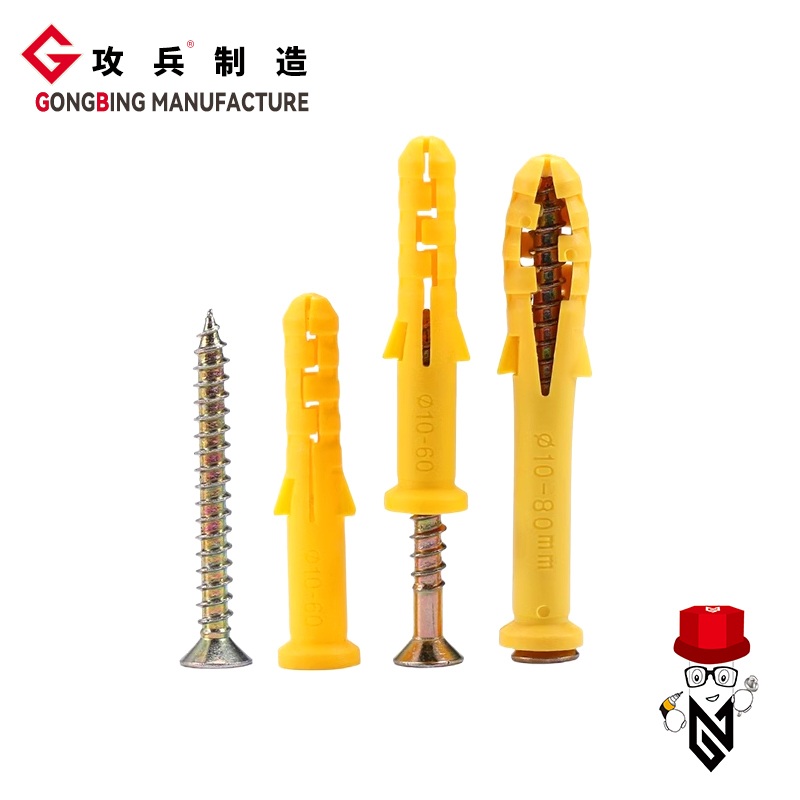external wall insulation screws
Understanding External Wall Insulation Screws
In today's construction and renovation industry, energy efficiency is paramount. One method that has gained significant popularity is external wall insulation (EWI). This technique not only enhances a building's thermal performance but also improves its aesthetic appeal. A crucial component of any external wall insulation system is the screws used for fastening the insulating materials to the substrate. This article delves into the role, types, and best practices associated with external wall insulation screws.
Why Use External Wall Insulation?
Before discussing screws, it's vital to understand the importance of external wall insulation. EWI involves applying a layer of insulating material to the exterior of a building's walls. This approach minimizes heat loss, reduces energy bills, and enhances indoor comfort. It also provides an opportunity for homeowners to refurbish their building’s exterior style, adding a fresh look to old facades.
The Role of Screws in EWI
Screws play a critical role in the performance of an EWI system. They are used to secure the insulation panels to the existing walls and ensure stability against environmental elements, such as wind and rain. Properly installed screws contribute to the overall durability, effectiveness, and longevity of the insulation system.
Types of External Wall Insulation Screws
Various types of screws are available specifically for external wall insulation applications. The most common types include
1. Insulation Screws These screws are designed specifically for fastening insulation boards to various substrates, like concrete or masonry. They feature a wide, flat head that provides excellent load distribution and minimizes the risk of damage to the insulation material.
2. Self-Drilling Screws Self-drilling screws are an excellent option for metal substrate applications. They come equipped with a drill bit tip, allowing them to penetrate the substrate without the need for pre-drilling, saving time and labor costs.
3. Spacer Screws These are used in conjunction with insulation boards that require additional spacing from the wall to maintain a thermal barrier. Spacer screws ensure that the insulation remains fixed while providing adequate ventilation behind the insulation layer.
external wall insulation screws

4. Specialty Screws Depending on the insulation type and environmental conditions, specialty screws may be required. These screws might feature corrosion-resistant coatings or enhanced thermal performance properties.
Best Practices for Installation
The efficiency of external wall insulation largely depends on proper installation practices. Here are some best practices to consider when using insulation screws
1. Substrate Preparation Ensure the substrate is clean, dry, and free from contaminants. This provides a solid foundation for the insulation and reduces the risk of future moisture issues.
2. Correct Screw Length Choose screws that are long enough to penetrate through the insulation and securely fasten into the substrate. Using screws that are too short may lead to poor insulation performance and detachment over time.
3. Spacing and Pattern Follow the manufacturer's guidelines for screw spacing and pattern. Generally, screws should be spaced evenly across the insulation boards, usually at the corners and the center of each panel.
4. Avoid Over-tightening While it’s essential to secure the insulation boards properly, over-tightening screws can crush the insulation, compromising its performance. A careful balance is necessary to ensure the integrity of the insulation material.
5. Regular Inspection After installation, routine inspections should be conducted to ensure that screws remain secure and the insulation system performs effectively over time. Address any signs of damage or loosening promptly.
Conclusion
External wall insulation screws are vital for the success of an EWI project. By selecting the appropriate screws and following best installation practices, builders and homeowners can significantly enhance the thermal performance and longevity of their insulation systems. This, in turn, leads to better energy efficiency, reduced costs, and a more comfortable living environment.
-
Weatherproof Plastic Expansion Anchors for OutdoorNewsJun.06,2025
-
Sustainability in the Supply Chain: Eco-Friendly TEK Screws ProductionNewsJun.06,2025
-
Load-Bearing Capacity of External Insulation FixingsNewsJun.06,2025
-
Double Head Bolts: Enhancing Efficiency in Industrial MachineryNewsJun.06,2025
-
Corrosion Resistance in Chipboard Screws: Coatings for Wholesale DurabilityNewsJun.06,2025
-
Butterfly Toggle Bolts : Enhancing Structural ResilienceNewsJun.06,2025
